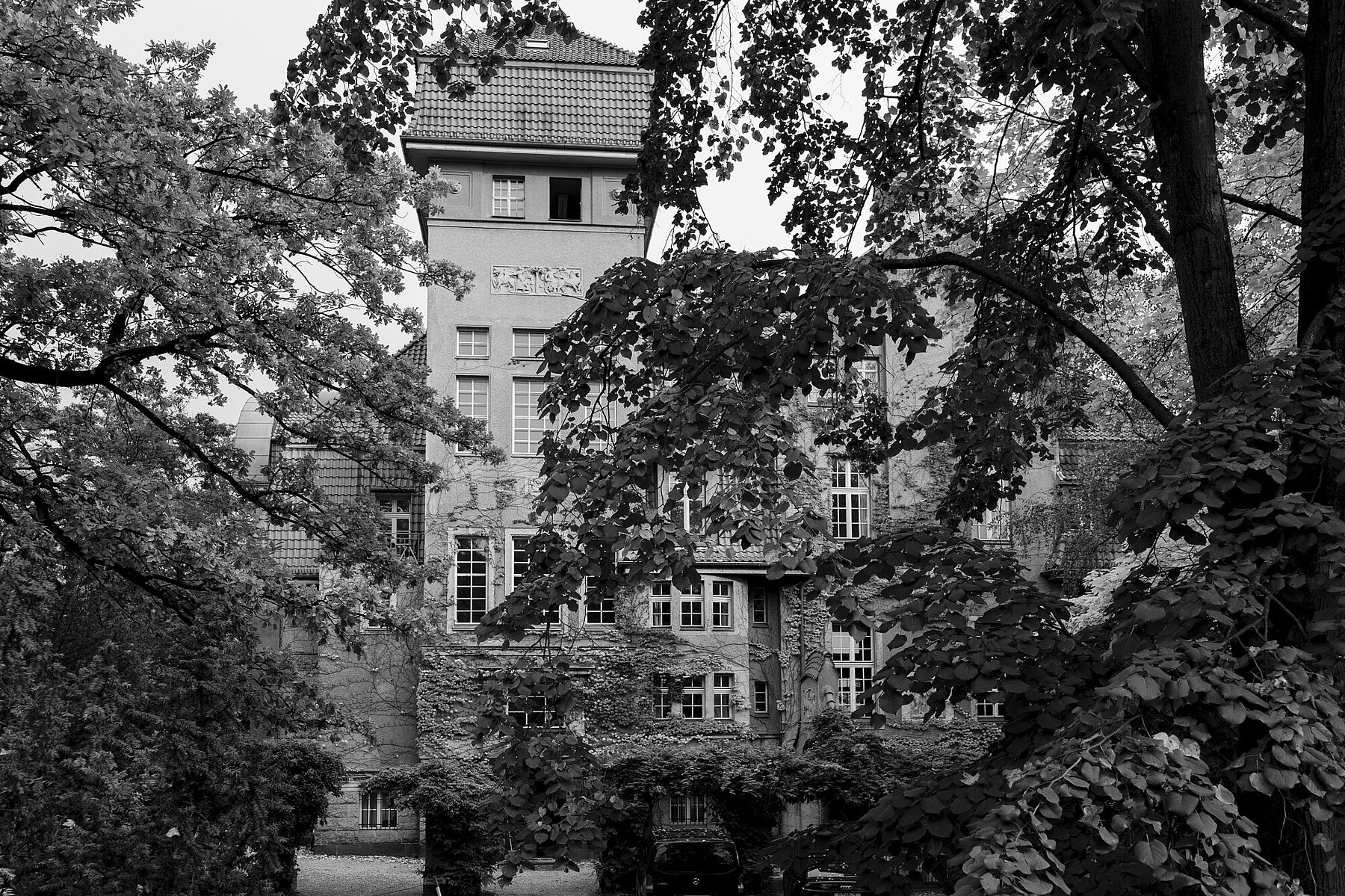Villa Walther

In the Villa Walther, just half a kilometer from the Wissenschaftskolleg’s main building, there are twenty-eight apartments which are placed at the disposal of Wiko Fellows and their families. This villa was built in 1912-13 and is an impressive example of that brand of late-Wilhelmine villa architecture which was in private ownership.
The story goes that an affluent Russian aristocrat commissioned Royal Building Councilor Wilhelm Walther with constructing this villa. Following outbreak of the First World War, when the Russian nobleman defaulted on payment of money already invested in the project—namely Walther’s money—this latter declared bankruptcy. Walther already had several large and lucrative building commissions to his name—the Viktoria-Insurance Building in Kreuzberg and the Bayernhof in the Tiergarten’s Potsdamer Strasse, among others. He evidently wished to utilize the Koenigsallee villa—which, according to contemporary building-law terminology, was a "single-family dwelling"—as a kind of calling card for potential clients. This helps to explain the villa’s vast dimensions and its lavishly ornamented facade, adorned with reliefs and gable mosaics as well as citations from Greek and Roman antiquity, this latter era, in particular, seen as related to if not being the mirror-image of the late-Wilhelmine period.
In 1918, following Walther’s bankruptcy proceedings, the villa was acquired by a factory owner and turned into a residential building with apartments for rent. In 1938 the building was acquired by the Third Reich under the auspices of the Reich Finance Ministry, and as of 1939 the Reich School of Finance was housed here. In the Second World War a bomb destroyed sixty percent of the building’s fabric.
After the war those still intact parts of the building were divided into apartment units. Legal successor to the villa was the Federal Republic of Germany (as represented by Berlin’s Finance Board), which planned, latest by the late 1960s, to put the property up for sale. But this failed to transpire because the villa was officially classified as an historical monument. In 1980 the federal state of Berlin acquired the property. Those surviving portions of the edifice were to be restored and at the same time the building was to have additions made according to its original plans (Cologne architect Gottfried Böhm responsible for their realization). Through a mixed-estate contract, the property was acquired by a property developer (Grundag). In 1988 the building was restored to its present state and in large parts rented to the Wissenschaftskolleg.
Reinhart Meyer-Kalkus